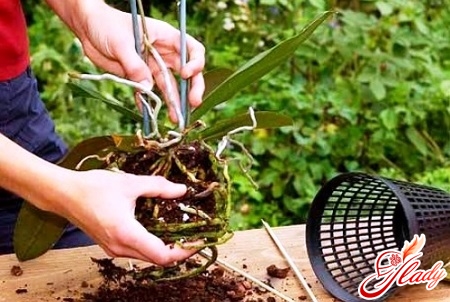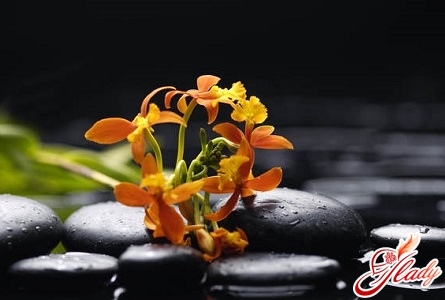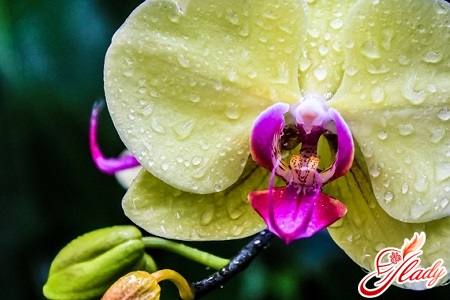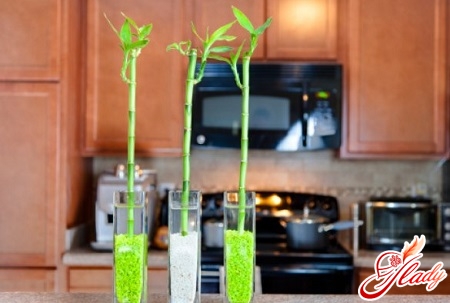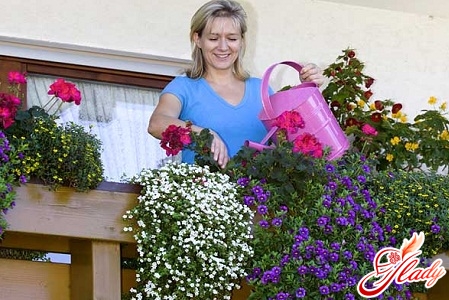 The Phalaenopsis orchid is considered one of the mostunpretentious types of domestic orchids. But this does not mean that it does not require care, does not get sick and is not capricious. Like all green pets, the orchid needs care and attention. It is mistakes in care that most often become the cause of all sorts of ailments of this plant. For example, if the orchid is not replanted in time, the plant will begin to get sick, wither and may even die. Of course, the most deplorable result of such a mistake by the owners happens very rarely - after all, the plant will try to survive in any conditions. But the loss of decorativeness, lethargy and poor health of the plant will be provided. Therefore, the phalaenopsis orchid must be replanted periodically. And in what cases and how exactly this should be done, we will try to find out.
The Phalaenopsis orchid is considered one of the mostunpretentious types of domestic orchids. But this does not mean that it does not require care, does not get sick and is not capricious. Like all green pets, the orchid needs care and attention. It is mistakes in care that most often become the cause of all sorts of ailments of this plant. For example, if the orchid is not replanted in time, the plant will begin to get sick, wither and may even die. Of course, the most deplorable result of such a mistake by the owners happens very rarely - after all, the plant will try to survive in any conditions. But the loss of decorativeness, lethargy and poor health of the plant will be provided. Therefore, the phalaenopsis orchid must be replanted periodically. And in what cases and how exactly this should be done, we will try to find out.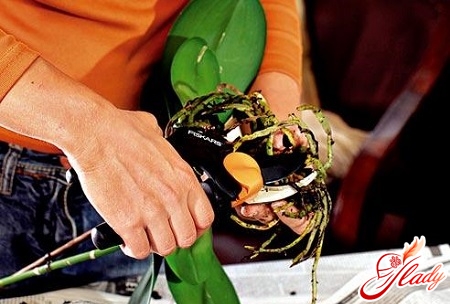
Reasons for transplantation
The Phalaenopsis orchid has a very powerful root system.system, which, moreover, grows quickly. And it is this that becomes the reference point that helps to determine that the plant needs to be replanted. There are only two reasons for replanting a Phalaenopsis orchid: the flower pot has become too small and various damages to the root system. Insufficient pot size If the pot becomes too small for the orchid, it must be replanted into a larger container. How can you tell that an orchid has outgrown its pot? After all, its roots are already partially above the soil surface. By the way, roots growing above the ground are just an indicator of the normal development and good condition of this flower. So, an indicator that the pot has become too small for the plant is such a powerful development of the root system that it almost completely fills the pot and displaces the substrate from it. In this case, for replanting, I choose a pot slightly larger than the previous container, and the replanting is carried out only after the orchid has bloomed. Root system damage All kinds of damage to the root system of the phalaenopsis orchid can be caused by errors in care. For example, if the flower does not have enough moisture, its roots dry out and die. With excessive watering and stagnant water in the pot, the roots, on the contrary, begin to rot and die. By the way, the cause of root death is also an incorrectly selected substrate. But it is the excess moisture that the plant tolerates with difficulty, like any other epiphytes with aerial roots. So, the death of the roots for one reason or another is the second need for transplanting the phalaenopsis orchid. Note that this condition of the plant can be called critical. And in this case, it requires immediate transplantation.
Choice of flower pot and soil
Originally for growing Phalaenopsis orchidsIt is necessary to choose transparent flower pots. Firstly, this will allow you to monitor the condition of the plant's root system, and secondly, the roots of this flower develop better in the light. Therefore, you need to plant and replant the orchid in transparent plastic pots. By the way, it is then easier to remove the plant from such a pot without damaging its root system. When replanting an orchid again (when it outgrows its pot), take a container whose diameter is two to three centimeters larger than the diameter of the old pot. If you are carrying out an emergency transplant, you can place the orchid in the old pot (pre-treated and disinfected) or take a container of the same volume. As for the soil, for the phalaenopsis orchid, take a special flower substrate or make up a soil mixture yourself. The soil suitable for growing the flower is a mixture of moss (sphagnum), perlite, charcoal and tree bark. The proportions of the substrate components depend on the conditions of the plant's maintenance. In apartment conditions, where the air is most often dry, moss should make up a third of the substrate, since this material absorbs moisture well and then saturates the roots with it. If the humidity in the room is high, then sphagnum is added to the substrate in a minimal amount. In general, it is quite difficult to correctly compose a soil mixture for a phalaenopsis orchid - a certain experience is required. And if you do not have such experience yet, then purchase ready-made soil intended for growing air orchids (epiphytes).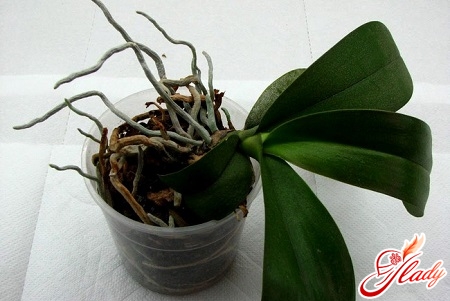
Transplant process
Whatever the reason for replanting an orchidPhalaenopsis, this process requires mandatory treatment of the roots (the most vulnerable part of the plant). First, the flower must be removed from the old pot. To do this, the substrate must be well moistened, the pot must be kneaded, and then, tapping on the bottom of the pot, carefully pull out the plant. After this, you need to shake off the old soil from the roots, wash the roots with warm (not hot!) water and carefully examine them. If during the inspection you find (and this is most likely to happen!) rotten or dried roots, as well as completely dead roots, then they must be removed. Damaged roots and their parts are cut with sharp disinfected scissors or a knife, and then the cut sites are treated with crushed coal and dried. If you are replanting due to severe damage to the roots, then you have to cut off many diseased and dead roots. This procedure is necessary, although the plant takes a long time to recover after it. But with proper care, you can save your orchid. So, the transplant process itself looks like this.
- The pot intended for transplantation is filled one third with a fresh substrate, laying the drainage layer on the bottom.
- Yellowed and wilted leaves are removed, making a longitudinal incision and pulling parts of the leaves to the sides.
- On the substrate, carefully place the roots of the orchid and sprinkle them with soil from above and along the sides, filling the voids between the roots.
- The roots are pressed gently (with a little effort), and the earth is poured on top.
- Roots that do not fit into the pot are left above the ground surface, making sure that the growth point and the lower leaves are not covered with earth.
- When transplanting plants with most of the cut roots, the plant strengthens the soil with wooden sticks, so that the flower does not fall out of the pot.
- Pot with the plant put in a place protected from direct sunlight and watered two or three days after the transplant.
Now all you have to do is provide your Phalaenopsis orchid with the right care.
Post-transplant care
The main thing is to watch carefullytransplanted plant. After another transplant, the plant usually feels good and responds gratefully to the new conditions with intensive growth. If an emergency transplant was carried out, the orchid will recover and adapt for some time. Such a flower can be covered with a transparent cap or placed in a plastic bag to provide the weakened plant with sufficient humidity. Periodically, the orchid needs to be ventilated, but protected from direct sunlight, drafts and temperature changes. In the case of transplanting a healthy plant, special conditions do not need to be created for it. After the first pause (two to three days after transplantation), you should return to the usual watering regime, and as soon as the flower starts to grow, feed it every other time (every second watering) with complex or special fertilizer. Otherwise, take care of the transplanted orchid, adhering to the usual rules. If you carefully monitor your Phalaenopsis orchid, take proper care of it and manage to replant it in time, it will thank you with its wonderful flowering. And the rules of care and replanting are not so complicated, so it will be easy for you to follow them. Good luck!




